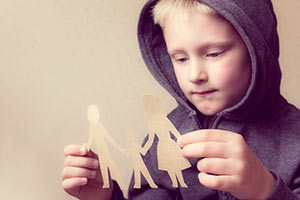ADOPTION IN
Minnesota

The Minnesota adoption options are available for those considering placing a child for adoption or adopting a child into their growing family. There are many reasons parents in all stages of life may consider placing or adopting a child in Minnesota. Your needs matter when it comes to the adoption process. An adoption agency can help you create an adoption plan that works best for you.
Adoption Near Me

Considering Placing Your Baby or Child for Adoption? You can learn more here or call an adoption counselor 1-800-236-7898.
Domestic Infant Adoptions can be completed through a Minnesota adoption agency or adoption attorney. Click here to connect with an adoption professional.
International Adoptions must be completed through an adoption agency or adoption attorney. You can learn more about international adoption here.
Foster Care Adoptions in Minnesota can be completed through the Department of Human Services (651-431-2000).
Gallery of children waiting to be adopted.
Join the Minnesota adoption group in our community!
Looking for more resources in your area? Check out the Adoption Directory for a listing of adoption professionals in your state.
I’m considering placing my baby or child for adoption.
Pregnant and have questions? We can help answer your questions by telling us what works best for you.
Are you pregnant and considering adoption? Do you need help getting started?
Click here and help us understand what your needs are and the preferences you have. We can help you get started.
Minnesota Adoption
By: Jenn Martin Wright
Howdy Minnesotaites! Let’s talk about Minnesota adoption. Are you a birth mother who is dealing with an unplanned pregnancy and do not know which option is best for you and your situation? There are choices–abortion means that you terminate your pregnancy before the deadline, which according to Planned Parenthood, “ It can be harder to find a nurse or doctor who will give you an abortion after your 12th week of pregnancy, so it’s best to try to have your abortion as soon as possible. You can get an abortion later than 24 weeks only in rare cases for medical reasons.” If you know that you want to have your baby, you might consider parenting yourself. But, there are challenges with that as well.
Are you a couple, family, or individual who wants a child or to add more children to your family but cannot get pregnant again for one reason or another? Adoption is a daunting task for sure, but this article will help you navigate through the many aspects of it, especially with a Minnesota adoption. First, let’s look at some fun and interesting facts you may not have known about the great state of Minnesota.
Interesting Facts about Minnesota
According to MNtrips.com, there are facts that even if you live in this awesome state, you may not know.
- Minnesota is known as “The land of 10, 000 lakes,” with 11, 842 in all. That is bigger than ten acres. That is unreal, right?
- It is well-known for the lakes that are formed there. Lake Superior is the largest freshwater lake in the entire world.
- The Red Lake is the largest in the whole state of Minnesota.
- There are over 800,000 boats registered in this awesome state! What a way to spend a hot summer day!
- Minnesota’s name comes from the Dakota word “Minisota”, which just happens to mean sky-tinted or cloudy water. How cool is that? Especially with all the water that surrounds Minnesota?
- Minneapolis is the coldest of the largest cities nationwide during the winter. Burr! They seem to get the majority of the snow in the winter too!
- In 1996, they reached a record low of -60 degrees! Can you say no water and frostbite from the dark side? I would never want to go outside!
- Minneapolis has a skyway system, which is an enclosed walkway that is eight miles long. That is equivalent to 73 blocks! Wow! How would you like to walk that in one day?
- This one is pretty cool! The first successful open-heart surgery was done on a five-year-old girl in 1952 at the University of Minnesota. It makes you wonder how that little girl’s life turned out, doesn’t it?
- In the 19th century, the major occupants of Minnesota were Germans, Swedes, and Norwegians. At this point, the largest ethnic group of those three is German.
These fun and interesting facts about the state that’s handling your adoption journey can be a great lead-in to a non-stressful conversation when the time comes for birth and adoptive families to chat or meet in person.
6 Steps a Birth Mother Takes When Placing Her Baby in Minnesota
Like many other states, the steps to Minnesota adoption are much the same. But, it is nice to have something to look at that is easily understood when you are contemplating placing your baby for adoption.
- Deciding what is best for your baby: The first step is the most difficult decision you will likely ever have to make. If the birth father is in the picture, you want to talk this over before making a decision. How do you feel about placing your baby? How does he feel? Are you on the same page as far as the criteria you want for your baby should you decide Minnesota adoption is what you want to do?
There are many, many reasons that birth mothers decide to place their babies for adoption. These can include but are not limited to:
- The birth father wants nothing to do with the baby or the pregnancy and the birth mother is scared to parent alone.
- The birth mother could be a young high school student (many believe that having sex one time cannot result in pregnancy, or the couple might think there is no way it could happen to them; that they are too young) and knows that she cannot raise a baby, finish high school on little sleep, and possibly forgo her college plans.
- The birth mother could be in college with classes, homework, studying, and a job to shoulder. With all of that going on, she may feel that the baby deserves to be in a family or with someone that can fulfill the baby’s needs.
- The birth mother could be a college graduate who wants to get her career off the ground before getting married, much less raising a family.
- The birth mother could even be an overwhelmed woman who already does not make enough to care for the mouths she feeds and knows that the baby needs better than that.
Some criteria you might want to consider as you weigh the pros and cons of adoption are:
- The couple must be married no less than ten years (could be more or less depending on what you are looking for).
- There must be a stable income so that the baby is taken care of.
- If there are other children in the family, they must be okay with adoption.
- The baby must be loved unconditionally like he/she is a part of the family you choose.
- The prospective adoptive parents must show the baby as it grows up that spending time as adults is just as important as spending time as a family (i.e. date nights).
You might come up with other areas you want to consider as you are making this loving, selfless decision.
- Choosing your agency and/or adoption attorney: When choosing the adoption agency that you will use to go through your Minnesota adoption journey, you must find one that is suitable for your situation. An agency that is known worldwide and aids both birth mothers/parents, as well as prospective adoptive parents, is the Gladney Center for Adoption. They are based in Texas but are known for helping families and birth mothers/parents in all walks of life in the United States and other countries. If you find that they are not the agency best suited to your needs, they will happily help you find one that is.
An adoption attorney can be helpful to both sides of the situation as they specifically work with adoptions. They help to make sure that the laws in your state are abided by. Some attorneys do not necessarily specialize in adoption but can help you especially if you are working with budget constraints.
- Appointing and meeting the prospective adoptive parents: Deciding who will take the responsibility of raising your baby and giving him/her a forever home is likely the second-hardest decision you will ever make. There was a time when the only way to find prospective adoptive parents was to go through paper files by hand, poring over pictures and documents, trying to learn all you could about strangers you might place your baby with. Nowadays, the task is a little easier as you can focus on a few at a time via photo listing.
Meeting prospective adoptive parents can be terrifying. Both sets of caseworkers are there when you meet face-to-face; this takes place usually after a phone call between you and the prospective adoptive parents. Communication is the key to get to know each other. Once again, you want to go with your gut as you talk with them. You might find it easier to talk with them if you have some questions ready to ask.
- Creating your adoption plan: This is your opportunity to voice what you want when it comes to whether you want contact with your baby after he/she is born. There are three options that you will want to discuss with the adoptive parents you choose.
- Closed adoption: This typically means that there is no contact at all after the baby is born, and the records are sealed so neither the birth mother/parents nor the child can find any information about each other. Fortunately, when the child turns 18, he/she can ask the judge for the records to be unsealed. This may not give as much information, as some of the documents could have been redacted. This type of adoption makes it hard on the child, especially if he/she wants to know where he/she comes from.
- Open adoption: Allows for the birth mother/parents to work with the prospective adoptive parents on agreed-upon contact with the child after birth. This could be in the form of letters, pictures, visitation, and some even allow social media usage. This way, the child gets to know where he/she came from, can ask his/her birth mother questions, and know that he/she is loved by not one family but two.
- Semi-open adoption: This one is fairly new and allows the birth mother/parents to be aware of certain information about her child; whatever the adoptive parents deem pertinent. It also allows for some type of communication, whether it be through yearly updates or a visit every couple of years. This is like the best of both worlds when it comes to these types of adoption.
- Hospital plan: Again, this is your choice, something else you have control over. You get to make the decision of who you want with you in the delivery room. Do you want the birth father? This could allow the two of you time with your baby before he/she is handed to the agency. Do you want your mother? A lot of times, your mother can calm you as no one else can, especially if she is in support of the choices you have made pre-pregnancy. Or, do you want to allow the adoptive mother to be a part of something she may never get to experience herself, and you want her as much a part of this process as you can? Whatever you choose, it’s your decision and yours alone.

- Life after Placement: You are not the same person you were pre-pregnancy. So, what does your new life look like? Do you have new hobbies? New friends? You may find that you are still in need of therapy as you deal with the myriad of new emotions that crop up as the days and weeks go by. Luckily, your caseworker is still right there with you. There are also adoption groups you can try, and you might need to find new things to occupy your time. You could get a job, or if you haven’t finished school, you could do that. The world is yours, even during this hard time.
Steps to Adopting a Baby in Minnesota
If you are a couple/individual that is looking into adoption, here are some steps that will help you navigate the ins and outs of Minnesota adoption.
- Deciding whether adoption is the avenue you want to pursue: As you consider adoption, you and your partner need to discuss at length what it will entail. The road to adoption is not a short one. It can take months–sometimes years–so the two of you need to be sure you have what it takes financially, mentally, and physically.
If you have other children, you want to make sure they know what adoption means and allow them to share their feelings and ask any questions they might have because this will change their lives too.
- Choose an agency and adoption attorney: Just like the birth mother, you want to find an agency that will fit your situation because they will be with you throughout this journey. You want to be certain that the caseworker you are assigned to fits with your wants and needs and will respect your wishes. If one agency does not work, keep looking, and you will find the right one. This goes for the adoption attorney as well, as he/she handles the legal aspects and contracts that are drawn up so that the documents are following Minnesota’s laws.
For more on Minnesota law visit Minnesota adoption laws.
- Home study: This could easily be the most difficult part of the adoption process for you and your family. A social worker comes into your home and invades every aspect of your life, making certain that you not only have the finances to adopt and care for a child, but you have enough love to give that child, especially if you have other children. He/she will interview you, your partner, both of you together, and sometimes even the children. This can take one visit, sometimes two or three depending on the agency.
- Meeting a potential birth mother: After you have passed the home study, then the waiting begins. When you get the call that a birth mother/parents want to meet you, you may be elated and scared all at once. Again, communication and making the birth mother/parents as comfortable as you can goes a long way.
When it comes time to discuss what adoption plan works best for both parties, it is good to be open and honest about what you want for the baby. Of course, take into consideration how the birth mother feels. If you work together, along with your caseworkers who are at all the meetings, you can come to terms that work for everyone involved.
- Finalization: After the baby is born and the six-month waiting period is over, then comes the hearing with a judge where the birth mother/parents sign their rights as parents over (if that has not already been done), and the adoption is complete. You have a new addition to your family!

DISCLAIMER: Although this article was written to aid birth mothers and prospective adoptive parents in Minnesota in their adoption journey, it does not take the place of an adoption agency or an adoption attorney. Please get advice from them when faced with such a decision.
Minnesota Adoption Guide
The information contained on this website is for educational purposes only and is not intended to be a substitute for professional legal advice. Always seek the advice of a licensed and qualified professional. While the content of this website is frequently updated, information changes rapidly, and therefore, some information may be out of date, and/or contain inaccuracies, omissions, or typographical errors.
Can I Adopt in Minnesota?
Every adoption agency has different requirements for adoptive parents, so be sure to check with the agency first to know the steps to qualify for adoption. In general, parents can be single, married, or divorced. They can own or rent a home. Applicants don’t need to be rich, but they do need a stable income to support a family. Parents need to be in good physical and mental health. They will need to pass a criminal background check, and the home needs to have enough space for another child. Parents will need professional character references.
What Adoption Regulations Exist in Minnesota?
Advertising: c Hopeful adoptive parents cannot give money or anything of value in exchange for adoption placement. § 259.21; 259.47; 259.55, Subd. 3; 260.93
Relinquishment: Parents must wait at least 72 hours after birth to execute consent for adoption, but no later than 60 days after a child has been placed in a prospective adoptive home will anyone who is required to give consent execute their consent. Parents have 10 days after written acknowledged consent to revoke for any reason. After the 10 day period, consent can only be revoked in court upon a finding that consent was obtained by fraud. § 259.24, Subd. 2a; Subd.6a
Birth parent expenses: Prospective adoptive parents may pay on behalf of the birth parents any of the following expenses: counseling, medical, and legal fees; adoption related transportation, meals, and lodging; agency expenses upon the request of the birth parent paid directly to the agency; reasonable living expenses due to pregnancy needed to obtain an adequate standard of living. Living expenses can only be paid for up to 6 weeks after birth. § 259.55, Subd. 1
Post-adoption contact agreements: Contact agreements are only legally enforceable when in a written court order. § 259.58
Birth father rights: A father’s adoption registry exists in Minnesota where unmarried fathers may submit their information and gain the right to receive notice of adoption proceedings. § 257.57
Finalization: Out of 614 adoptions completed in 2014, the average time between TPR and adoption finalization was 13.9 months. (acf.hhs.gov)
Review Minnesota adoption laws in detail.
Is Adoption Assistance Available in Minnesota?
Can I adopt a Child from another country?
It is always possible to adopt a child from another country, even if you live in the United States. Children under 18 adopted from a Hague Convention country entering the U.S. with an IH-3 visa may automatically receive U.S. citizenship.
Children adopted from a non convention country must qualify as orphans before receiving U.S. citizenship. When U.S. citizens finalize an adoption abroad, they must apply to the USCIS for an IR-3 visa for the child. An IR-3 visa classifies the child as an immigrant and provides the child with citizenship upon arrival in the States.
Readoption or validation of a foreign adoption is an option but not a requirement in Minnesota. When birth parents wish to receive a state birth certificate for their adopted child, they must submit documentation from readoption or validation of a foreign adoption decree in a State court. Read more about Minnesota intercounty adoption regulations here.
State Contacts
Gallery of children waiting to be adopted: https://adoption.com/photolisting?page=1&search_type=region&range=UnitedStates
State subsidy contact person:
Heidi Ombisa Skallet
Department of Human Services
PO Box 64944
St. Paul MN 55164-0944
(651) 431-5889 • fax: (651) 431-7491
Summary
Adoptions in Minnesota can be completed through the Department of Human Services.
Parents can be single, married, or divorced. You can own or rent a home. Applicants need a stable income. Parents need good physical and mental health. You will need to pass a criminal background check. Homes needs to have enough space. Parents will need professional references.
It is unlawful in Minnesota for anyone besides a licensed adoption agency or an individual approved by the commissioner to place or accept a child for adoption.
The following expenses are permitted: counseling, medical, legal, transportation, agency expenses, and reasonable living expenses.
Contact agreements are only legally enforceable. A paternity registry exists for unmarried fathers. The average time between TPR and adoption finalization was 13.9 months.










